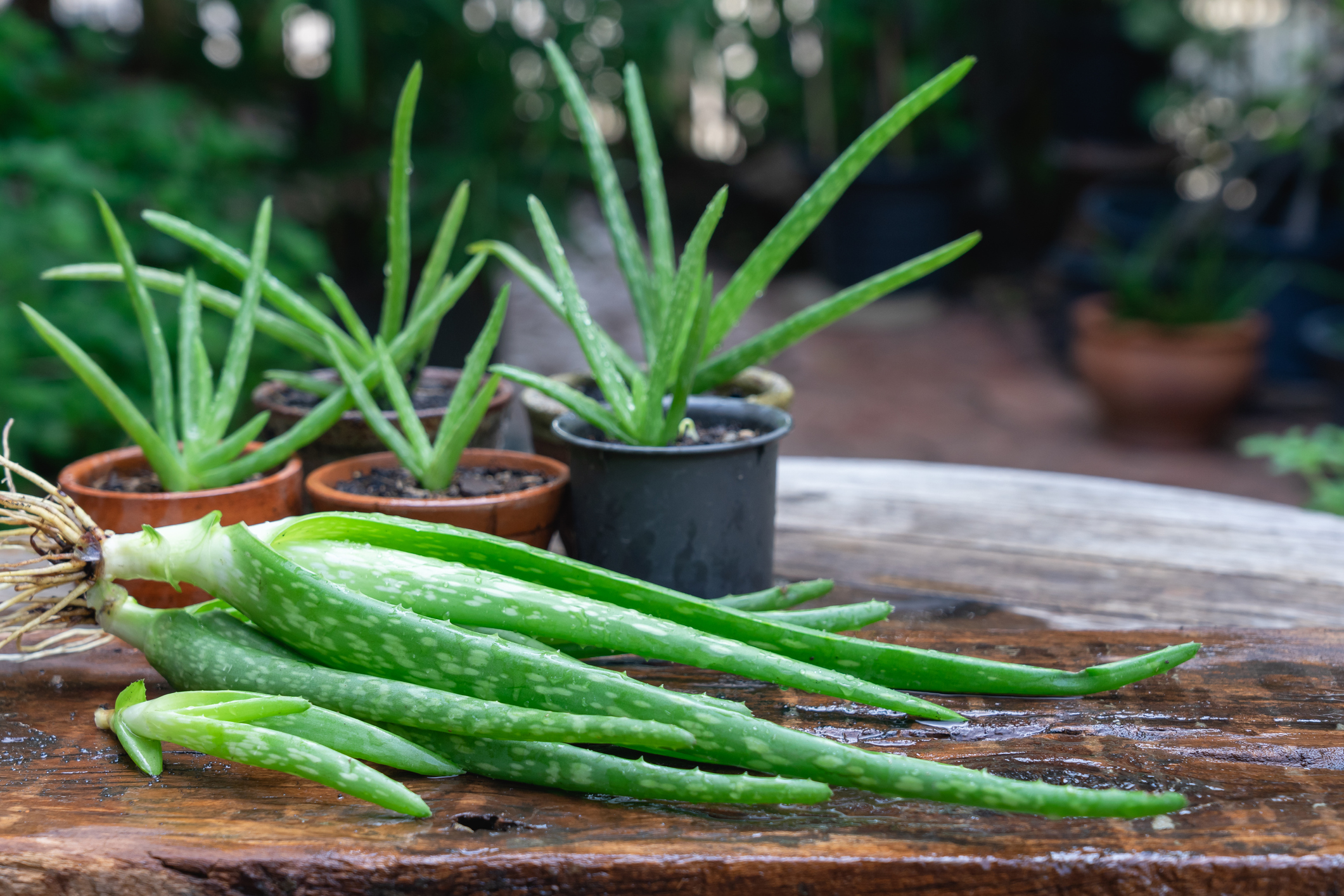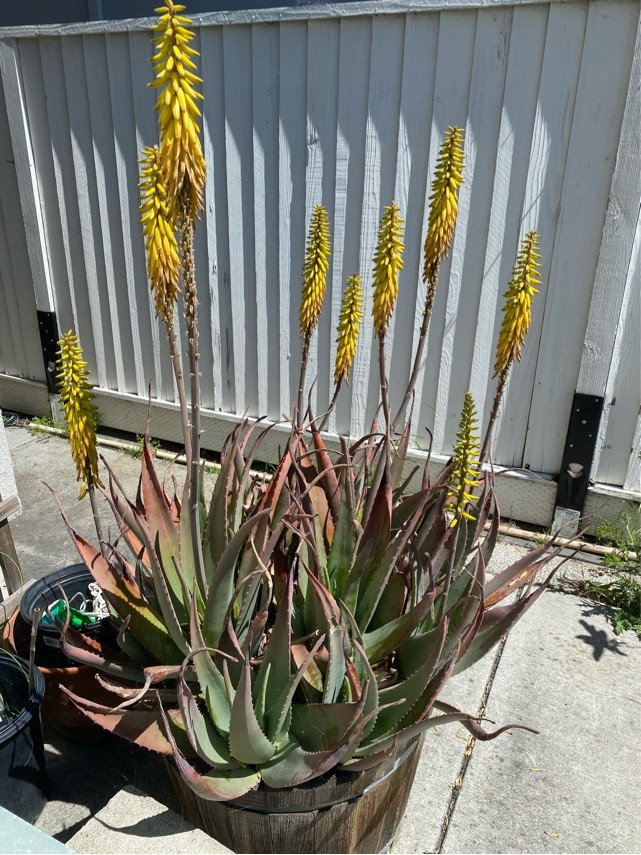If you’re interested in aloe vera seedlings, I should first let you know that they are simple to cultivate and that many people grow them for their attractive appearance while others do it for the plant’s favorable effects on the environment, the skin, and their overall health. Now let’s learn how to grow aloe from seedlings.
Seedlings of aloe vera are raised in wet soil without any direct sunlight. Online stores sell seed pods, but if you already have a mature aloe vera plant that is in bloom, you can easily develop seedlings from the seed pods. When a plant is grown from seeds, it is referred to as a seedling. It is advantageous for creating an aloe plant hybrid, selling it abroad, and distributing it globally for business and cultivation purposes.
The first form of any plant is its seed. It is a starting place when a plant either develops or perishes for a variety of causes. Aloe vera plants don’t typically produce flowers, and it can take up to 6 or 8 years for one to bloom. Although the herb is typically safe, excessive usage of anything can cause various issues.
If you didn’t know, aloe vera sap gel has a significant economic worth, making it crucial for gardeners and entrepreneurs who sell natural face wash and lotions made from only pure plants. Juice for health treatment and skin care products both contain it.
Over 490 different species of aloe vera exist, and the majority of them can spread widely. It is a perennial plant, which implies that it can readily grow for 9–10 years with no maintenance. Aloe plants don’t need a lot of light; they only need regular hydration and healthy soil.
Table of Contents
How do you grow aloe from seedlings?
Aloe is simple to grow from seeds, and it quickly produces seedlings. However, you must wait years for the plant to reach maturity in order to obtain aloe plant seeds. Then, after producing a few blossoms for a few weeks, it withers. The plant there begins to produce new seeds by pinching off of the dried bloom. These seed pods contain seeds that can sprout from the parent plant. The process of producing your plant from seeds is known as sowing, and no other technique, such as leaf propagation, is required.
Once the plant produces new aloe vera babies, people do propagate aloe vera seedlings. These young plants appear to have smaller leaves. The propagation mechanism is simple. You only need the infant aloe leaves, which must have the white half removed. This section can create new aloe vera plants by beginning to generate roots.
For seedlings, the seed pods fall to the ground or soil after the mature aloe vera flowers in the growing months for a few weeks before withering. It might contain seeds that you can plant in the ground. Keep the soil moist throughout the first several days until the plant begins to grow and produce leaves.
The seedling method would require patience because the plant grows slowly from the seed, much like newborns do, but once the plant is established, it will develop more quickly. Fertilizer and a favorable site are necessary for growing aloe plants more quickly.
If you can’t get aloe seeds, you can buy it from the links below:
Aloe vera seeds to buy:
Source 1: Buy things on Amazon
Source 2: Buy things on Etsy
If you don’t want to wait any longer, just purchase a leaf cutting; it will grow well with little attention. The link to purchase the cuttings for the new aloe plant is provided below.
Purchase a fresh aloe plant:
Shop on Amazon.com.
How do you take care of an aloe seed?
Because aloe seeds require humidity to grow, regular watering during the first few weeks is necessary, along with planting them in shaded regions. Aloe seeds take two to three weeks to sprout. Maintain a high level of moisture in the potting soil since germination depends on it. It’s time to move your plant into some shade once it starts to produce seedlings. Until your infant plant forms strong roots and grows to a height of 1.5 to 2 inches, it doesn’t need direct sunlight for its early stages of development.
Once they reach adulthood, putting them in a small amount of morning sunshine will promote their general growth. Additionally, they require more water to moisten the soil. However, they must be careful not to overwater the plants because this can cause fungal infections in the aloe.
Once they are higher, a new pot needs to be used, and the soil must be fertilized. Using a succulent-specific potting mix mixture, since our aloe plant is a succulent and requires specialized soil to grow.
Here is how to make an aloe vera soil mixture:
#1 Recipe
#2 Recipe
#3 Recipe
To receive the most of the nutrition, we can mix them and put our aloe vera in it.
There are several potting mixes that are available and that I use for improved aloe vera growth if you don’t want to prepare your own potting soil.
Some of the top pre-made potting mixes are listed below:
How long does aloe vera take to grow from seed?
When seedlings develop, it indicates that your plant’s roots are growing and will likely become larger in a few months. Put this aloe vera in a spot where it can get morning sunshine from 8 to 11am before being covered. If not outdoors, a location near a south-facing window inside would be necessary.
It is advised to cultivate more than 2 seeds so that you can produce more aloe plants in less time if your aloe seeds don’t always mature properly.
Is Aloe Vera good for seedlings?
Aloe vera is a beneficial plant for seedlings since they require moisture to develop seeds. It must sprout more quickly than rooting hormone can do if you want it to grow more quickly. But I advise against doing that; instead, let it develop properly. When the plant is two months old, you can add fertilizer and good potting soil to accelerate its growth.
Keep in mind that the growing season is the only time to apply fertilizer or any other external component for plant growth. Aloe vera can be fertilized from spring through summer, after which it enters a dormant state that they don’t like at all because it temporarily halts growth until the threat of frost has passed.
Leaf cuttings are frequently treated with a rooting hormone, as I have done with snakes, aloe, and numerous other houseplants. Any plant’s root development can be accelerated by it. Because roots can now absorb all nutrients, which essentially means that roots can supply all nutrients, rooting is crucial because it signals the plant to grow leaves and other parts.
Aloe Vera Care
I have discussed the aloe vera plant’s requirements for light, water, fertilizer, temperature, and humidity.
Aloe vera needs indirect light or some shade in order to grow. For your aloe plant, any tree, balcony with a weak light source, south-facing window, or anywhere with just weak to indirect light would do.
Watering: You should water your plants once a week, or twice on particularly hot days. When partially shaded, aloe vera receives a lot of sunshine, necessitating two weekly waterings. Put your index finger inside 2 inches of topsoil to see if it needs water or not. It would undoubtedly indicate whether or not your plant needs water. Water the soil right away if it feels dry.
Use any fertilizer or a mixture of succulents and cacti during the aloe vera growing season.
Temperature: Aloe vera can thrive in a room with a temperature range of 55 to 84 degrees Fahrenheit. It can also endure temperatures of 40 to 50 degrees F.
Aloe is a water-dependent succulent, thus a moderately humid environment is ideal for growing it. They will undoubtedly be strong and flourish if grown in a humid environment.
indoor agriculture For aloe plants, use a humidifier: Buying on Amazon
Pesticide: Mealybugs, spider mites, and scale can develop on your aloe vera since it contains sap juice that many insects ingest. Therefore, illnesses like fungal infections may cause root rot. Use Neem oil or any other pesticide to get rid of pests; I’ve provided a link to the best one below.
Shop on Amazon for the best pesticide for aloe plants.
If there is no more room on the pot, you can repot your aloe. The aloe plant can be removed by troweling it out of the dirt after loosing the soil (simply tap it 3-5 times). Make a distinction between the large and little aloe cuttings. One of them is clearly a baby because of its diminutive leaf size. The little leaves cutting aloe vera in a new pot for a new plant can be reported. Afterward, reposition the larger leaves aloe cuttings. Once you’ve successfully repotted the aloe plant, give it some water and move quickly.
Wrap Up
Aloe Vera-Looking Plants: 7 Similar Succulents (Pictures)
Does Aloe Vera Need Sunlight to Grow? – (How Much Sun Does It Need) (How Much Sun Does It Need)
Aloe: Cactus or not? – (What is the Difference Between) (What is the Difference Between)
How to Fix: Why Did My Aloe Plant Turn Purple (6 Reasons)



